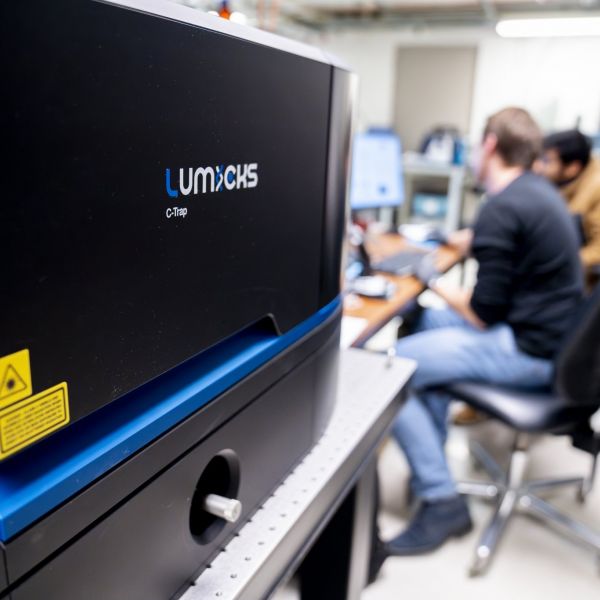Feb 28, 2024
New single molecule biophysics equipment expands research capability
A new addition to the Huck's instrumentation portfolio is expanding the options available to life science researchers, and uses powerful lasers as tweezers to manipulate individual molecules..

The Huck Institutes X-Ray Crystallography Facility has acquired a Lumicks C-Trap, a dynamic single-molecule microscope that combines optical tweezers, fluorescence, label-free microscopy, and an advanced microfluidics system.
“Being able to tether a single molecule of DNA, RNA and protein or even cells or phase condensates and study them by force spectroscopy correlated with confocal microscopy is powerful,” said Research Professor Neela Yennawar, the facility’s director.
The C-Trap employs optical traps, which use focused laser beams to trap and manipulate individual molecules like DNA, RNA and proteins as well as phase condensates. The optical trap sends a laser through a microscope, creating a highly focused beam of light strong enough to trap and hold in place objects like plastic beads, which can be coated to stick to a variety of biomolecules, such as proteins, cytoskeleton filaments, DNA, or RNA.
By applying the optical traps, researchers are able exert controlled forces on single molecules and study their mechanical properties. With liquid phase separation, they can study viscoelastic properties of phase separated drops.
“Potential research areas and applications using the C-Trap include biophysical studies of gene regulation; investigating the mechanical properties of biomolecules such as DNA, RNA, and proteins,” said Yennawar. “This can include studies on stretching, folding, and unfolding of molecules and complexes involved in gene transcription, replication, and repair to understand what roles their dynamics and motions play in these processes.”
Professor of Chemistry Tae-Hee Lee, an expert in single molecule biophysics, serves as the scientific co-director of the capability. He and Yennawar are currently collaborating on a grant proposal to the NIH.
To learn more about the Lumicks C-Trap or Penn State’s X-Ray Crystallography services in general, visit the facility’s website.